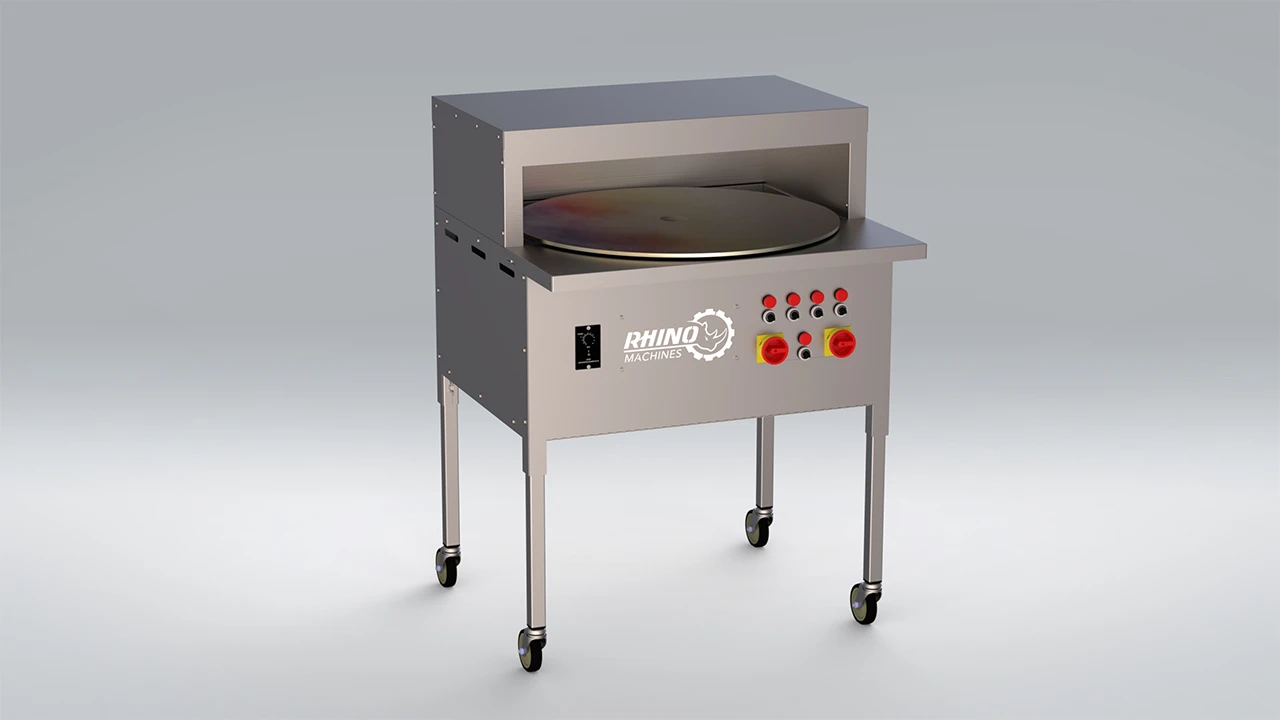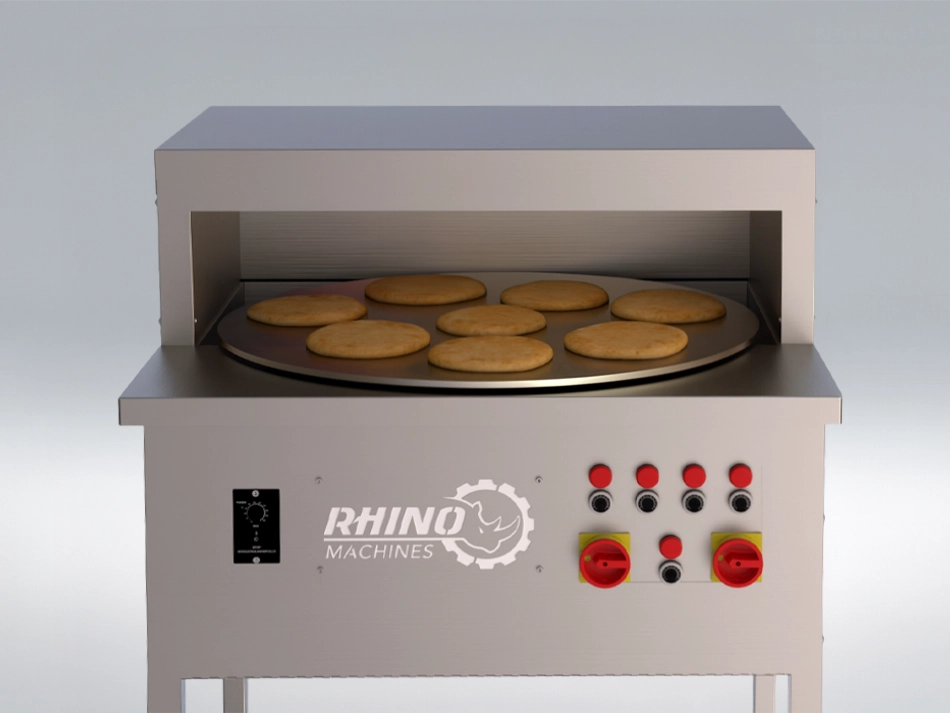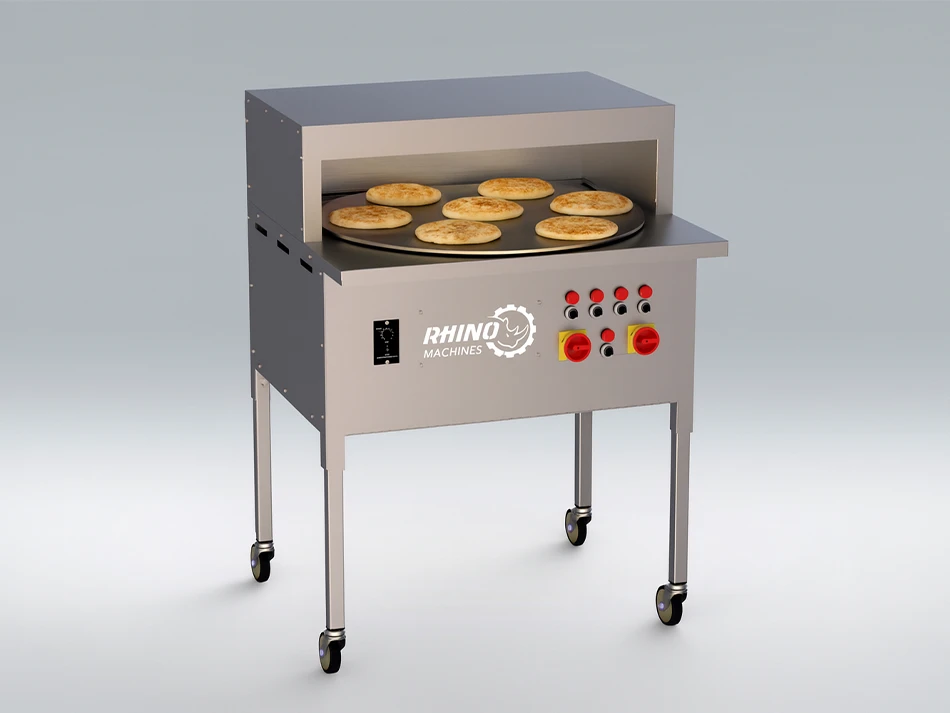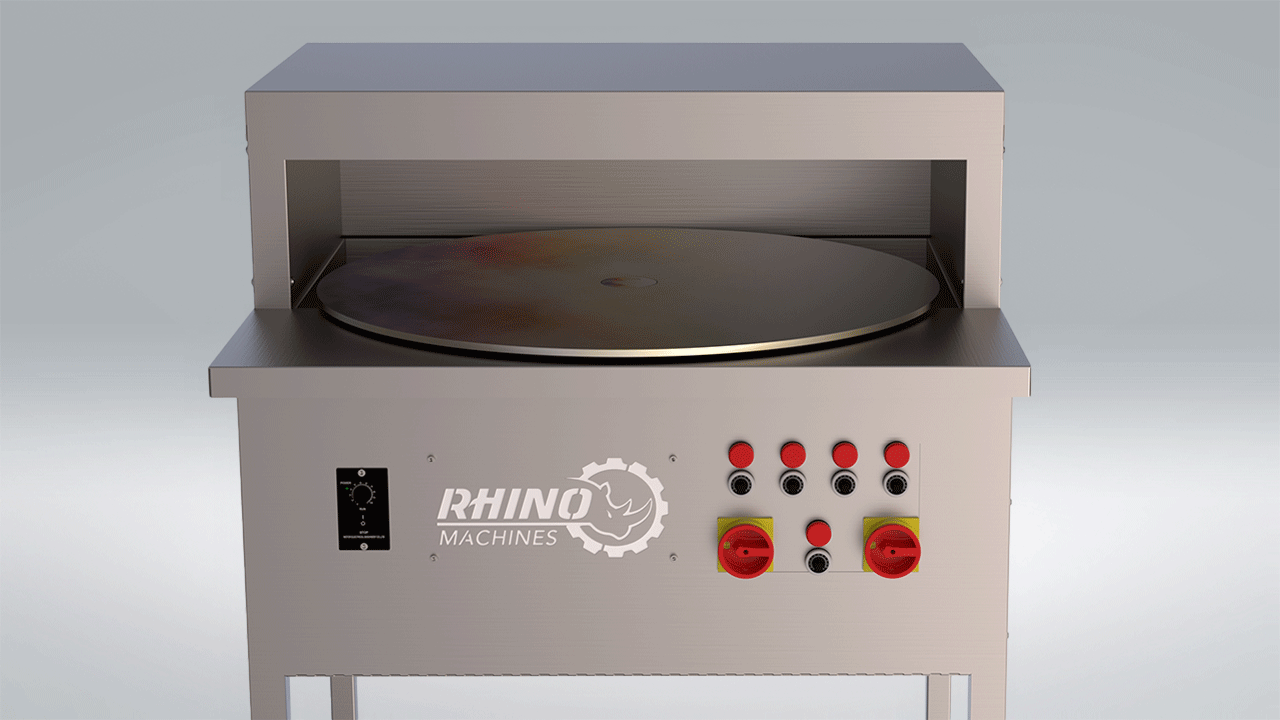Complete Guide: How to Use Our Naan Oven for Perfect Naans
Naans are a staple when it comes to enjoying Indian cuisine. This traditional bread, baked in a tandoor, has won hearts worldwide and continues to grow in popularity. Learn how to use our rotary naan oven to easily make your own homemade naans.

Our catering machines
Are you looking for a catering machine? Don’t wait any longer and choose the one that suits you from our catalog.

Origins and History of Naan
Discover where these Indian flatbreads come from.
A bread from South Asia
Originating from India, naans are thin flatbreads just a few millimeters thick. Widely enjoyed, they are eaten across many regions of South and Central Asia, including Pakistan, India, China, Myanmar, and neighboring countries. Each region adds its own touch to this traditional recipe, making naans as diverse as they are flavorful.
The Tandoor Tradition
Traditionally, naans are baked in clay ovens called tandoors, iconic in Indian cuisine. The dough, carefully prepared, is stuck directly onto the hot walls of the oven. It remains there for a few minutes, just long enough to cook evenly and develop its unique texture. Once perfectly golden, the naans are removed from the tandoor, often by hand—a technique that requires skill, precision, and experience.
This traditional method produces naans that are soft and fluffy on the inside while slightly crispy on the outside, with the distinctive flavor that makes them famous. Each batch reveals a subtle blend of textures and tastes, resulting from a fast and intense cooking process that cannot be replicated with less traditional methods.
The tandoor is not just a cooking tool: it is a symbol of Indian culinary heritage, where mastery of heat and cooking time transforms a simple dough into a bread that is iconic throughout the cuisine of the subcontinent.

Understanding Our Naan Oven
In Europe, and particularly in France, the traditional baking of naans in a tandoor cannot be replicated in restaurants due to efficiency and hygiene constraints. This is why we designed rotary naan ovens, which allow you to prepare soft and flavorful naans while complying with sanitary standards and optimizing cooking time.
Presentation of Our Machines
Our rotating naan oven has been designed to maximize efficiency in the kitchen. It can bake up to 300 naans per hour, thanks to its rotating tray that allows multiple naans to be baked simultaneously. Additionally, you can place and retrieve your naans outside the heating zone, ensuring optimal safety and reducing the risk of burns. This oven combines productivity, safety, and baking quality. Ideal for restaurants and food service professionals. Easy to use, it adapts to different types of dough and fillings. Perfect for restaurants, food trucks, or catering services.


Advantages Compared to a Traditional Oven
Although the tandoor is the traditional method for baking naans, a rotary naan oven offers several advantages, especially suited to European and professional kitchens.
Increased safety: Unlike an open tandoor, the oven allows you to handle the naans away from high-heat areas, reducing the risk of burns.
Improved productivity: Thanks to its rotating plate, it is possible to bake several naans simultaneously, reaching up to 300 naans per hour.
Compliance with sanitary standards: Modern ovens ensure hygienic baking and adherence to European standards, which is difficult to achieve with a traditional tandoor.
Baking control: The temperature and baking time can be precisely adjusted, ensuring perfectly golden and fluffy naans with every batch.
Ease of use: Even without experience with a tandoor, it is easy to master naan baking thanks to the intuitive settings of the oven.
Request a personalized quote for our rotating naan oven
Are you interested in our rotating naan oven? Contact us now for a personalized quote. You can also visit our dedicated page to learn more about its features and benefits.
Preparing your naans before baking
To optimize baking and achieve soft, flavorful naans, it is essential to properly prepare the dough before cooking. Here are some practical tips to ensure perfect naans with every batch.
Tips for Soft and Golden Naans
To achieve perfectly soft and golden naans, here are some essential tips:
Let the dough rest: Allowing the dough to rest gives the yeast enough time to work, making the dough more airy and light.
Knead the dough well: Even kneading ensures a light and supple texture.
Use a well-heated oven: The constant heat of the rotary naan oven ensures optimal rising and even baking.
Do not roll out the dough too thin: Leaving some thickness allows the naans to rise properly.
With these simple tips, you will achieve soft, golden, and flavorful naans with every batch.

Step-by-Step Use of Our Rotating Naan Oven
To use our rotating naan oven effectively and achieve soft and flavorful naans, it is essential to follow these steps. This will help you avoid any cooking issues and ensure a safe and optimal experience with every batch.
Startup and Initial Settings
To start, turn on the oven and adjust the cooking power as well as the rotation speed of the tray using the buttons on the control panel at the front of the oven. These settings help optimize the baking and ensure perfectly golden and fluffy naans.
Placing the Naans on the Rotating Tray
The placement of the naans on the rotating tray is flexible, but it is important to leave a small space between each naan to prevent them from sticking together during baking. This precaution ensures that the naans cook evenly and rise properly, resulting in soft, fluffy, and flavorful naans with every batch.
Cooking Time and Temperature Control
To cook approximately 10 naans simultaneously on the rotating plate, allow for a cooking time of about 2 minutes. This duration can be adjusted according to your preferred level of doneness, to achieve naans that are more or less golden and soft. Careful monitoring ensures perfectly cooked naans in every batch.

Tips for optimizing production
To optimize the production of your naans and ensure a long lifespan for your oven, it is important to follow these recommendations.
Large-scale cooking
Depending on the size of your naans, it is possible to place up to 10 on the oven’s rotating plate at the same time. This capacity allows for fast and efficient production, perfectly suited to the needs of restaurants and catering services. During continuous operation, our oven can reach a performance of 300 naans per hour, ensuring smooth service even during peak periods.
Regular oven maintenance
To preserve the condition and efficiency of your naan oven, regular maintenance is essential. Clean the surfaces after each use, preferably with non-abrasive products to protect the stainless steel. Periodically check the condition of the electrical cables and heating elements to ensure optimal and safe operation. Clean the rotating plate after each use to maintain even cooking, ensure impeccable hygiene, and extend the oven’s lifespan.
Thorough maintenance not only helps comply with hygiene standards but also ensures consistently perfect naans and steady production.

Conclusion
Naans, traditional Indian breads, have now become a staple in global cuisine. While their traditional cooking in a tandoor is admired for its authenticity, it remains difficult to replicate in Europe due to hygiene and efficiency concerns. This is why our rotating naan oven has been specifically designed to meet the needs of professional catering and restaurant businesses.
With its rotating plate capable of cooking up to 10 naans simultaneously and a capacity of 300 naans per hour, it combines productivity, safety, and compliance with health standards. Easy to use, it ensures soft, fluffy, and flavorful naans while providing optimal working comfort for restaurateurs.
Finally, with simple and regular maintenance, you ensure the longevity of your equipment and consistent cooking quality, even during high-demand service.
Our catering machines.
Contact Us
Address
4 avenue Pierre Mauroy, 59280, Armentières
Phone
+33 (0)6 19 89 72 27
Click to show encoded email
